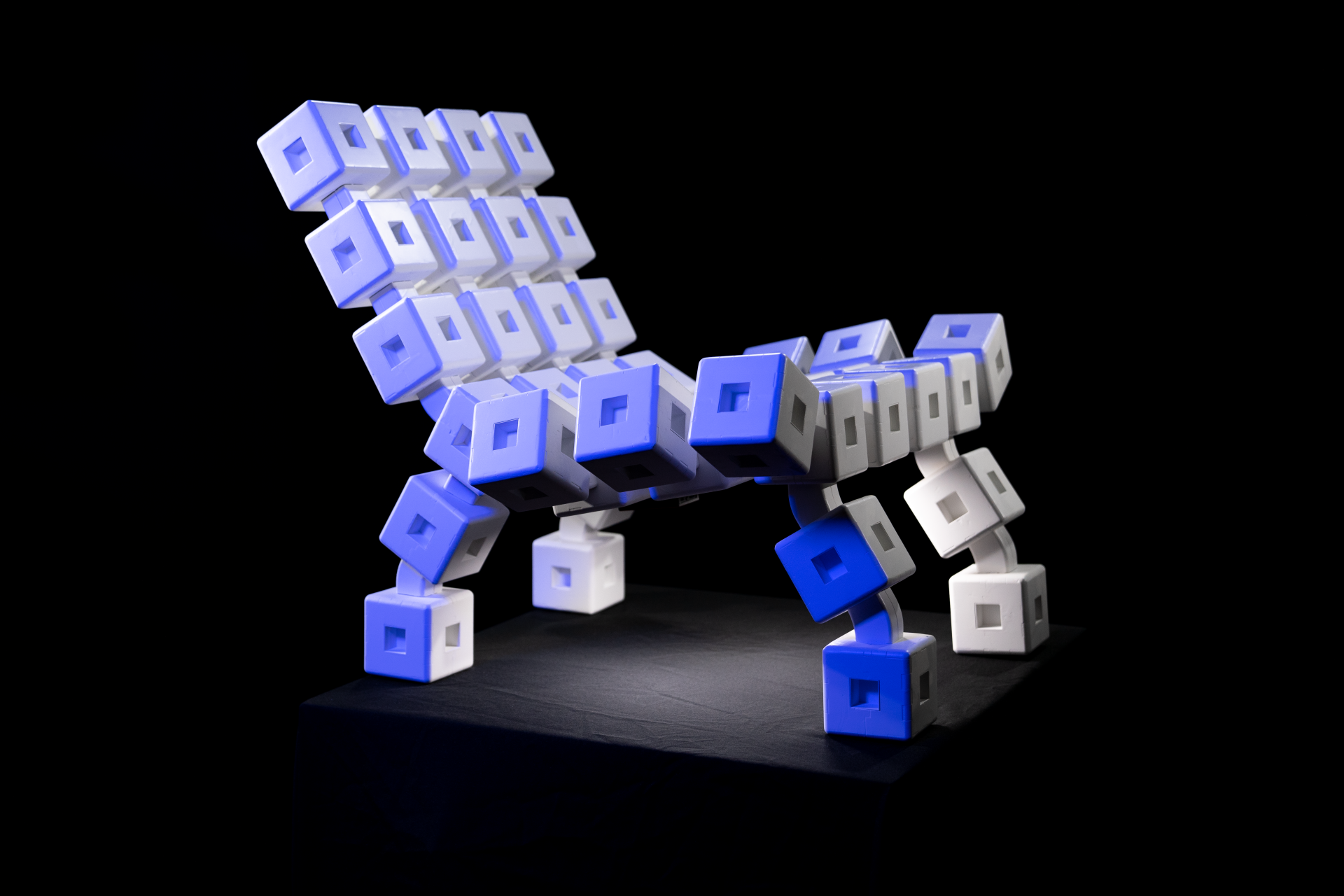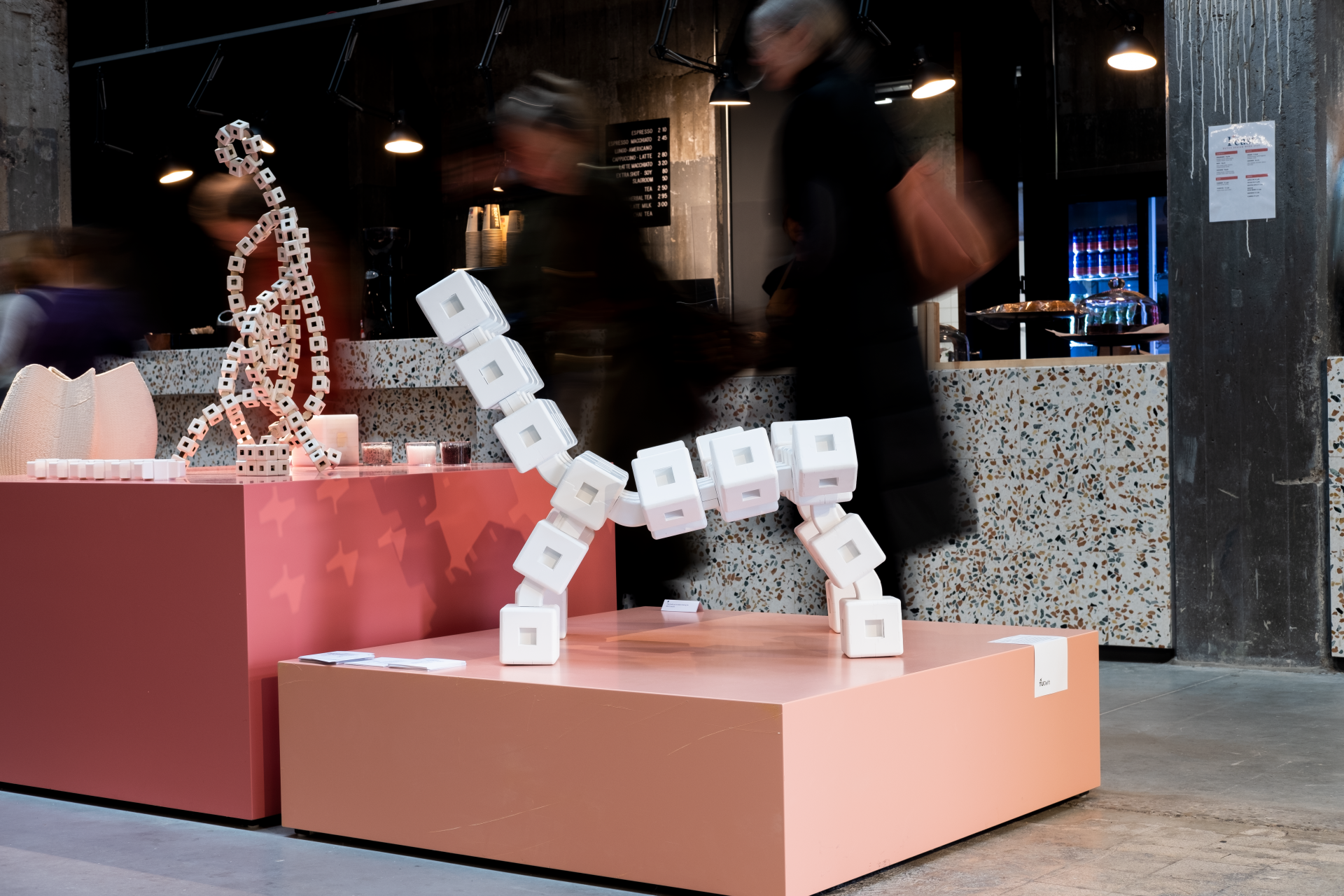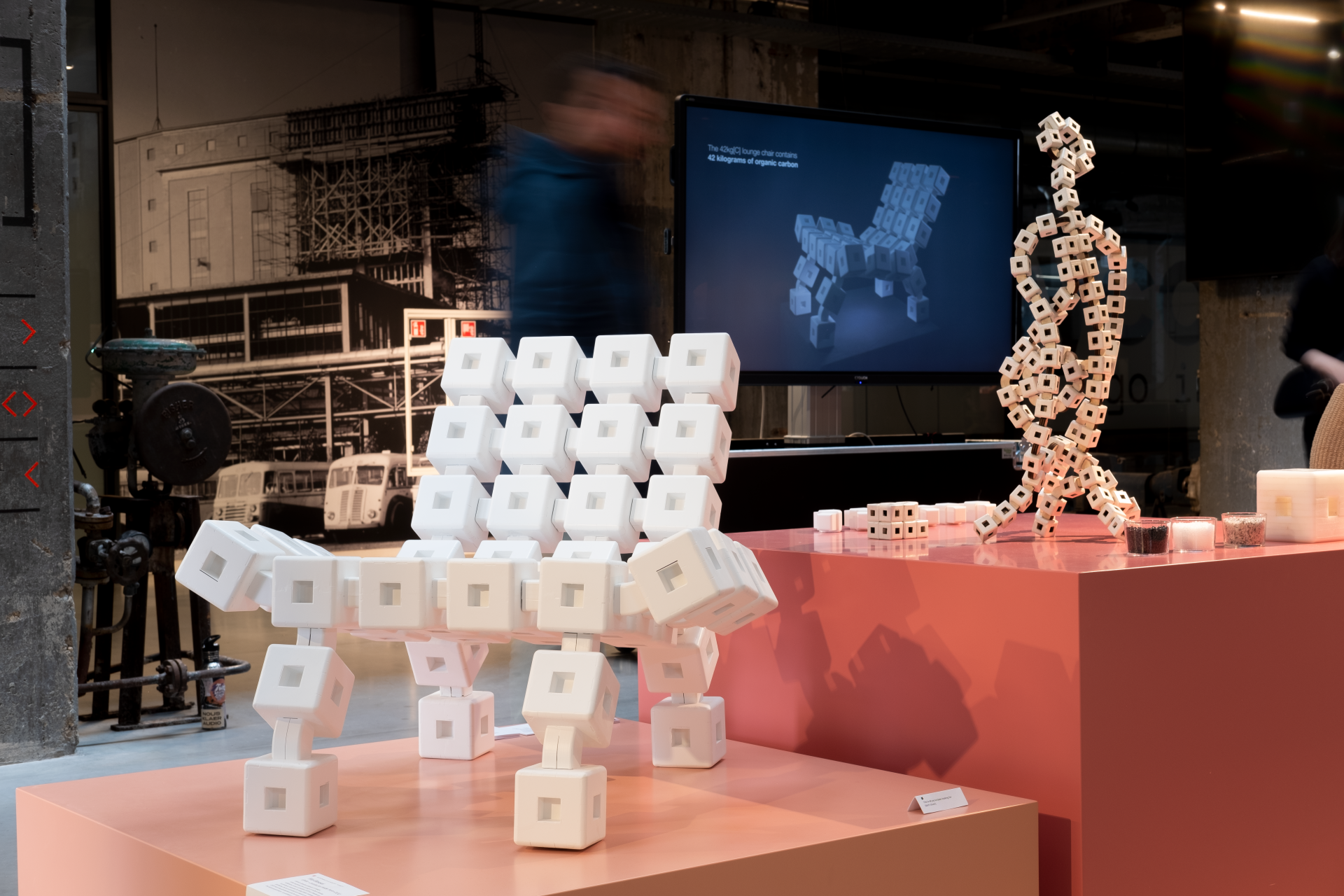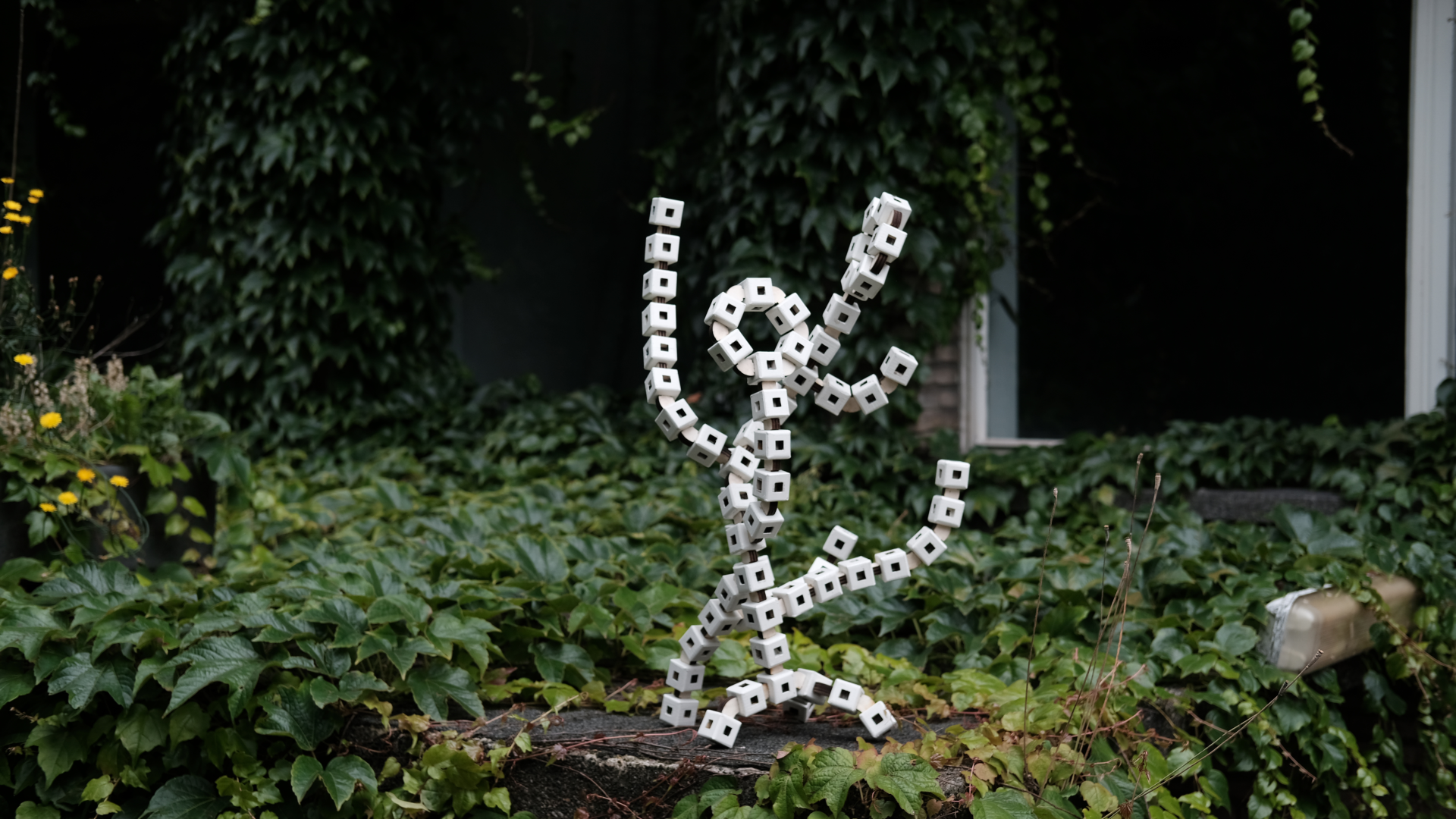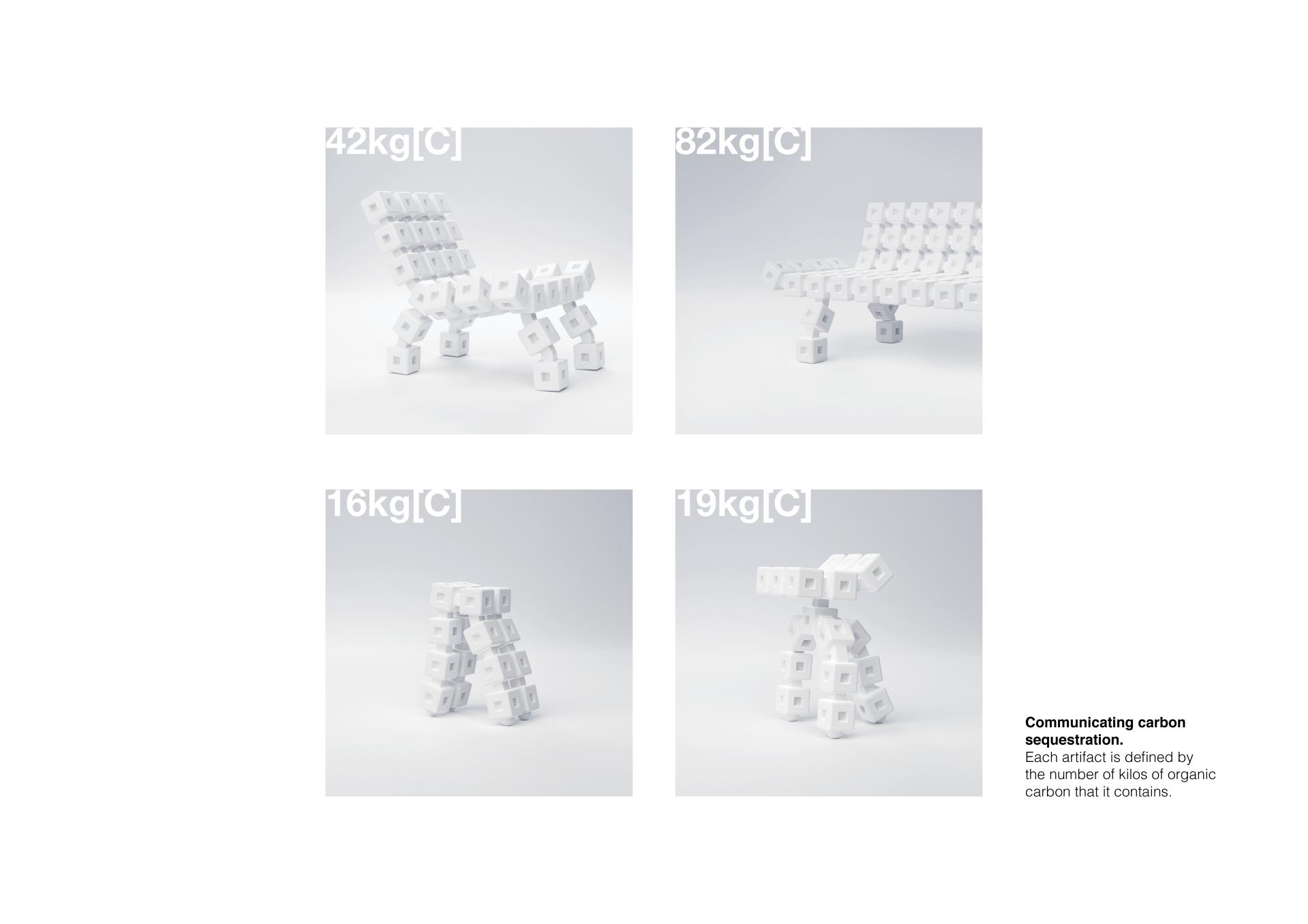Unito: a chair as a carbon sink
Basic information
Project Title
Category
Project Description
Unito is a modular chair that stores CO2 in its materials. The chair consists of blocks of bioplastic made from atmospheric carbon; 1 kg carbon per block. The result is a hefty 42 kg chair that was designed to last forever. The chair is reconfigurable and adaptable to remain relevant for centuries to come, ensuring long-term carbon storage in the built environment. The Unito chair is part of an approach to production that could be scaled across many different industries and sectors of society.
Geographical Scope
Project Region
Urban or rural issues
Physical or other transformations
EU Programme or fund
Which funds
Description of the project
Summary
Climate change will lead to immeasurable adverse impacts across societies and ecosystems. The IPCC has outlined several emission pathways that we must follow to limit catastrophic breakdown of planetary life-giving systems, all of which require active removal of CO2 from the atmosphere - a monumental 100 to 1000 gigatonnes by the end of the century. While this is a daunting challenge, it can also be viewed as an opportunity to reorient our material and production systems to consume excess atmospheric carbon.
Carbon-negative biomaterials remove more carbon than they emit into the atmosphere during their life cycle, creating a net environmental benefit. This concept offers a novel starting point to reconsider products for the era of climate crisis.
The original Bauhaus proposed a new design aesthetic in response to rapid technological changes occurring in mass manufacturing. Unito explores the aesthetic and functional dimensions for products designed for an artificial carbon sink. We can turn CO2 into products. But how should these products look, act, behave, and relate to society and ecology? Since material stores CO2, products designed for the carbon sink favor mass over lightness. Timespan of products also must change. Fossil reserves remained trapped underground for millions of years. Captured carbon must also be stored safely on similar timescales. As such, scales we will need to reformat design towards objects that last centuries, even millennia, requiring novel considerations of spatio-temporal scales.
Unito uses a bio-HDPE plastic made from atmospheric carbon to make durable building blocks that are designed to last for hundreds of years. The blocks each contain 1kg of carbon from the atmosphere and are joined together to make products. The products are reconfigurable and adaptable by the user to remain relevant for centuries to come, all-the-while ensuring long-term carbon storage in the built environment.
Key objectives for sustainability
Sustainability has become a necessary consideration for all human activities and is on the agenda of nearly every sector of society. But presently, the main approach to sustainability is in reducing adverse environmental impacts of production. Given the urgency of climate change, we must not only reduce the impact of current production, but actively reverse the emissions associated with past production. Even if we were to create a fully sustainable system of production and consumption, the warming trends caused by existing greenhouse gas emissions will have serious consequences for large parts of the world.
Many experts caution that without drastic reductions to consumption and economic growth, we will not make it. While consumption of everything surely must decrease, creating the necessary behavioural and societal changes in time seems unlikely in time. On ethical grounds, many parts of the developing world do not have access to basic standards of living. Since developing countries should be entitled to the same conditions that we are fortunate to enjoy in Europe, growth and increased production of goods will likely continue in the short term.
Carbon-negative materials are radically promising as they harness consumption towards our climate change mitigation goals. By shifting our societies to renewable energy, and by ramping up industrial carbon sequestration, carbon-negative materials will become cheaper and more ubiquitous. This opportunity is new to designers and the public, and a similarly new design thinking is warranted. Unito is important in this regard, as it uses design to communicate a future that is both radical and obvious. It proposes new ways of thinking about products that act to clean up, towards restoring our relation with ecology. And, it (re)considers the necessary scales required. The concept itself is an approach to production that could be scaled across many different industries and sectors of society.
Key objectives for aesthetics and quality
In the Bauhaus, design and aesthetics were used to introduce a new technological future that offered promise, excitement, and democratized access to goods. Designers can translate the potential of technology into something accessible for all. In this tradition, Unito aims to translate technological, ecological, and behavioral principles into a product that can tangibly be understood by all.
Firstly, the concept aims to communicate the idea of carbon mass-storage and the scales of action required to address climate change. It is difficult to understand what CO2 is. It is an invisible gas, diffuse in the atmosphere. By creating 1kg blocks of carbon that people can hold, touch, and feel, the concept aims to make tangible both the emissions we are creating on a daily basis, as well as what it means to get them back out of the atmosphere.
Second, the concept aims to reconsider products as reconfigurable and adaptable objects to last longer than our current approach. Most of what we throw away is not functionally obsolete - we get bored, or products do not adapt to our present. By creating something that can change, can be redefined, can be rebuilt, we can avoid the need to dispose of our goods. It offers intrigue beyond simply acting as a functional object, but also by engaging with people socially and emotionally. By allowing users to create, the hope is that emotional attachment to an object is improved. Finally, this intervention challenges our need to buy new things. Maybe, we actually don't need something new, but instead different, or our own.
The concept explores the relationship between nature, culture, and technology. Organic forms that appear to be grown are also possible and are explored through sculpture . Growth emerges from a technological building block - formally represented as 10.1mm HDPE cubes with recessed square connector slots. This tree is a cyborg; nature and technology are interwoven and growth equals to carbon removal.
Key objectives for inclusion
The goal of Unito is to explore a new world of utilizing CO2 to build products. This future is is one where everybody can engage tangibly in collective action towards the global removal of atmospheric CO2. Could everything we consume act towards returning greenhouse gasses to the ground? There are many unanswered questions, but this possibility should be explored for its promise. Designers should act alongside material scientists and industrial producers to ask critical questions, communicate possibilities, and engage in speculative discourse. For certain, we must push for changing what and why we consume. Unito presents a new design thinking towards carbon-negative products, where life-cycle is considered from a much longer timescale.
On another level, Unito is not a product but a system architecture, and it puts everyday people in position of designers. It offers a tangible, playful, optimistic, and concrete way to personally engage with the climate crisis. I believe that creativity and design are qualities that are intrinsic to all people, and engaging creatively with the world is satisfying for most. As children, we all loved building sandcastles, or playing with legos, or building forts with the sofa cushions, or making art. But over time, we forget that we have this potential. Most people are acting as specialists in a machine designed for efficient production and sale of products - be it a new smartphone, gas drilling infrastructure, or insurance. It is difficult to square up the cumulative impact of the machine and the banality of individual cogs. Negative environmental and social by-products of this machine are placed out of scope, and deemed externalities to be dealt with in another place or at another time. Unito aims to reconnect people with their creativity, autonomy, and ability. Everyone can make a chair. Everyone can make a sculpture. Everyone can play a role in combatting the climate crisis.
Physical or other transformations
Innovative character
Unito begins by thinking about the climate crisis and the immense scales of action required to tackle this challenge. The carbon that we must remove from the atmosphere is monumental. But look around the room you are sitting in as you read this. Look to all the things around you. Your home, your car, your chair, your table, your computer. Everyday we produce and consume a monumental amount of stuff across the globe. What if all of this stuff were made from CO2. This sounds like a wild fantasy, but it is actually possible. Nature is already doing it. All the trees, animals, plants, grasses, fish, coral; everything originates from CO2. Humans originate from CO2. Constructive and symbiotic co-existence between humans and non-humans can exist by thinking about carbon. It is at the center of all life-processes, as well as climate change. It is also at the center of a million-year saga where ancient plants were transformed into fossil deposits. The goal must be: to design and produce things the way nature does - from CO2 - and then fix the carbon content into stable form for ultra long-term storage.
Material scientists are already thinking about this. There is a tremendous amount of research going into new ways to produce polymers directly from CO2, how to directly capture CO2 from the air, and how to make new bio-based materials. In the early 20th century, engineers developed novel ways to mould plastic, bend metal tubes, and shape wood. But it wasn't until an aesthetic was developed to translate these technologies into a new design language that the world began to change. Today, we need designers to communicate a vision for what to do with all this CO2. We need to change the way people think about products. We need to shift our entire approach to the material world to rebalance the distribution of carbon on the earth. We already did it once (but the wrong way), and now we have to do it again. I hope Unito can pave the way towards a better future.

